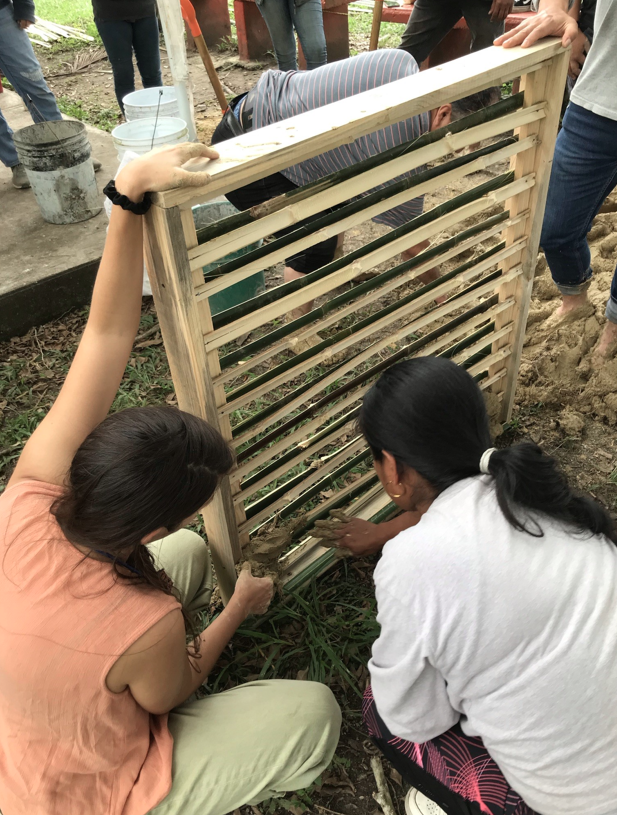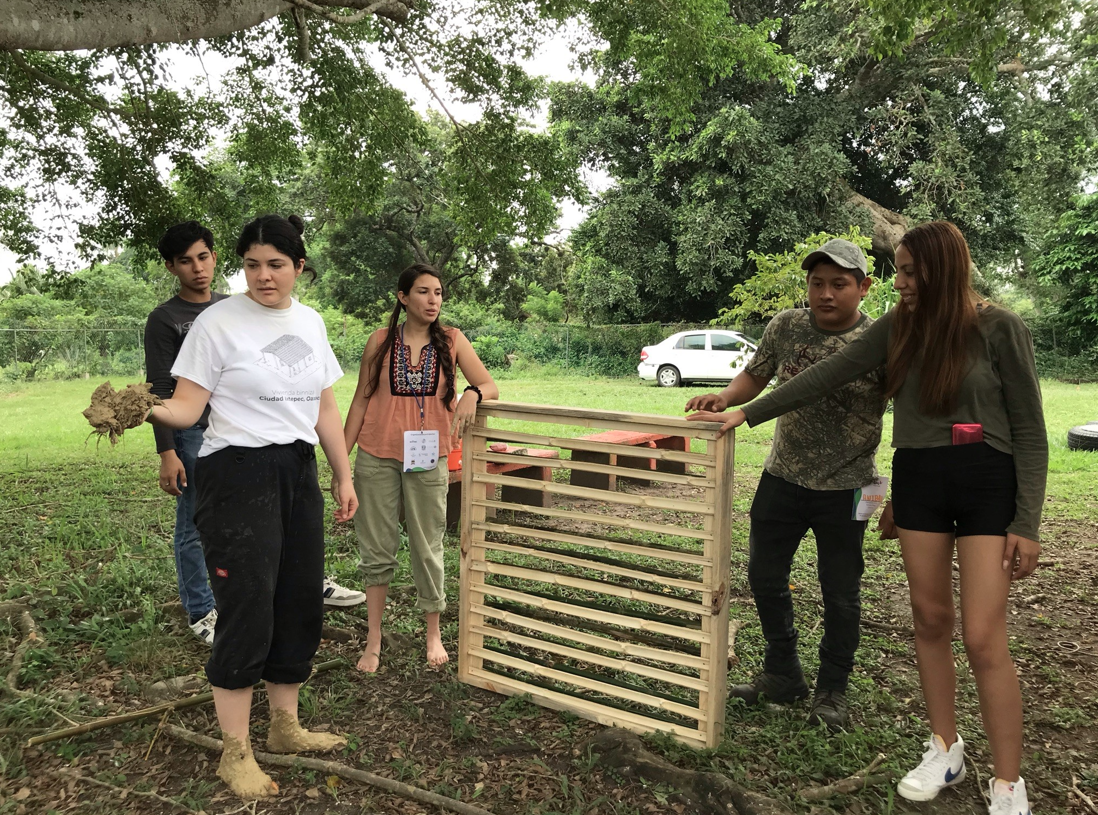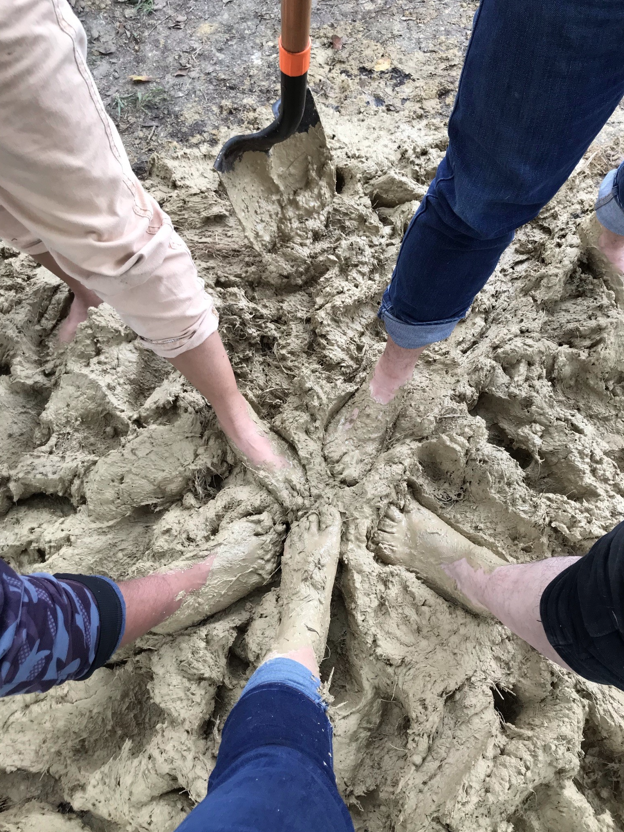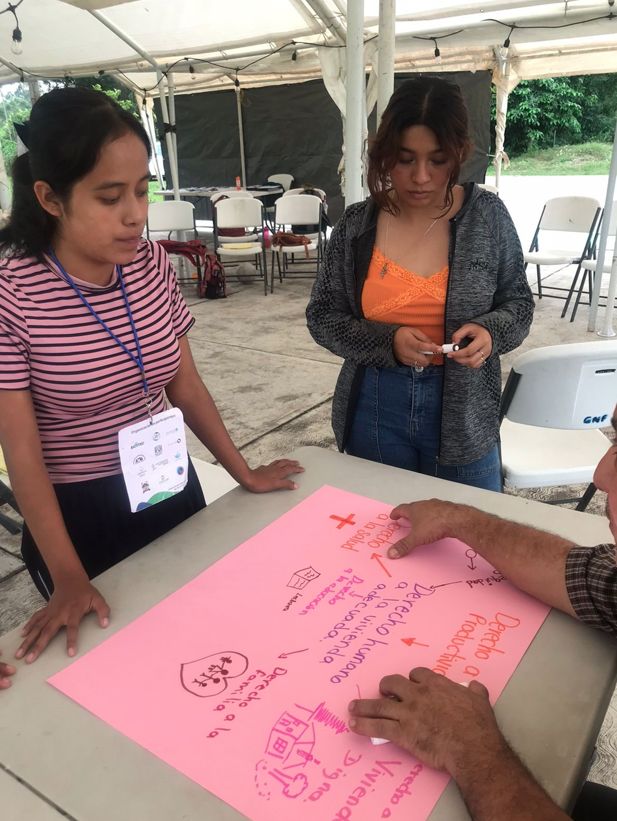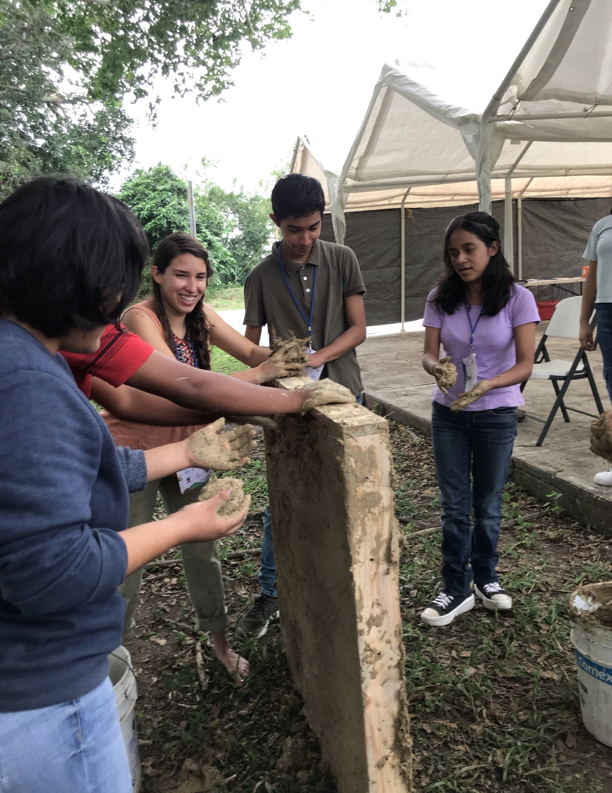From November 24th to 26th, 2023, Module V of the Xalag Chúchut School took place at the Telebachillerato Países Bajos facilities in Tuxpan, Veracruz, situated along the Ruta de los kilómetros. The event was attended by 20 students.
The workshops were conducted by Arquitectura Cruda, a group of female architects who strive to incorporate traditional environmentally conscious construction practices with architectural innovations.
These women aspire to not just build functional structures, but also to enhance community unity and encourage people’s involvement in the architectural projects they undertake.
The workshops were facilitated by Anaid González Lugo del Rosal and María Fernanda Campuzano Hurtado, the founders of the collective. The objective was to introduce participants to systems thinking and motivate them to take action in response to the climate crisis.
Session one: “Biomass and anthropomass”
In the initial session, attendees distinguished between biomass (organic matter utilized as an energy source) and anthropomass (mass of manufactured inanimate solid objects), enabling them to recognise the significant presence and detrimental impact of the latter on the environment.
“Our approach is to selectively extract from nature what is advantageous to us, rather than what is essential, and then we manipulate it with technology. While technology has its merits, it can also have adverse consequences on the planet, such as the creation of anthropomass,” said Veronica Reyes Uzcanga
Session two: “Introduction to the human right to adequate housing”
In the session, titled “Introduction to the human right to adequate housing”, the main emphasis was on highlighting that every individual possesses the right to housing that guarantees security of tenure, access to essential services, and a suitable living environment, among other fundamental aspects.
The participants met in teams to discuss the topic and expressed themselves as follows:
“We fight with animals for territory in search of our living space. But we all have a moral and legal right to a home that respects nature and coexistence with animals. “We all have a duty to take care of the place where we will live,” said the participants of the Xalag Chúchut School, team five.
The participants also discussed the theme of eco-technology as a means of ensuring the right to suitable and respectable housing. In line with this perspective, they created home designs that incorporated eco-friendly technologies. Notable features of their designs included rainwater harvesting systems, composting, dry toilets, bio-filters, vegetable gardens, and energy-efficient cookers.
“I imagine my home with a house on which I have a green roof with solar panels and in another part I can collect rainwater in a tlaloque to use the water for bathing and watering the plants in my garden; the water from the shower and the water used in the house is channelled into a tank to be treated and reused. I would like to have a dry toilet, make compost and spread it in an orange garden; the kitchen will be made of bamboo with a thatched roof; in the areas where there are not many trees, I will put branches and leaves on the slope to recover and retain the water in a lake,” said Pamela Gisell Guzmán
Session 3: “Experimenting with earth”
In this session, the theme of “Experimenting with earth” was thoroughly discussed. The session explored the connection between water and earth and how their physico-chemical properties can be combined to create a durable and sustainable material for building houses. The participants had the opportunity to witness this through the practical application of “building with bajareque” technique. This technique leverages the natural regulation of temperature by utilizing a mixture of clay, grass, and water, providing a stark contrast to cement that blocks the sun’s rays.
“I want to build my house with natural materials, install a rainwater collection system, build a small blue table, with earth and grass… Who will help me build my house?” asked Ernesto Pérez Pascual
